Abstract
Shepard, Maurice C. (U.S. Naval Medical Field Research Laboratory, Camp Lejeune, N.C.), and Carl D. Lunceford. Effect of pH on human Mycoplasma strains. J. Bacteriol. 89:265–270. 1965.—The optimal reaction of culture media for the cultivation of T-strain Mycoplasma of human origin was investigated. By use of a recently modified tryptic digest medium, the optimal reaction in either agar or fluid medium was found to be pH 6.0. In contrast, human classic (large-colony) Mycoplasma could be cultivated in agar or fluid medium over a rather broad pH range, and the influence of the reaction of the medium appeared to be primarily species-dependent. M. salivarium, for example, grew best in agar from pH 5.5 through 6.5. M. pneumoniae (Easton's agent) yielded largest colony numbers in agar and highest titers in broth at pH 8.0. In the case of T-strain Mycoplasma, both maximal colony numbers in agar and highest titers in fluid media were achieved at a reaction of pH 6.0. In addition, largest colony size of T-strain Mycoplasma was also achieved in agar at pH 6.0, and averaged 50 to 100% larger than that obtained by cultivation at pH 8.0 with the same medium. Although T-strains will develop in agar media over a pH range of from 5.0 through 10.0, the extremely small colony size and poor staining properties resulting from growth in an alkaline medium make their recognition in agar cultures difficult. Aerobic cultivation of T-strains was first achieved in agar adjusted to pH 5.5 to 6.0. In fluid medium, multiplication of T-strains occurred only within the limits of pH 5.0 through 8.0, with highest titers being reached at pH 6.0. Greater attention to the reaction of complete Mycoplasma media is stressed.
Full text
PDF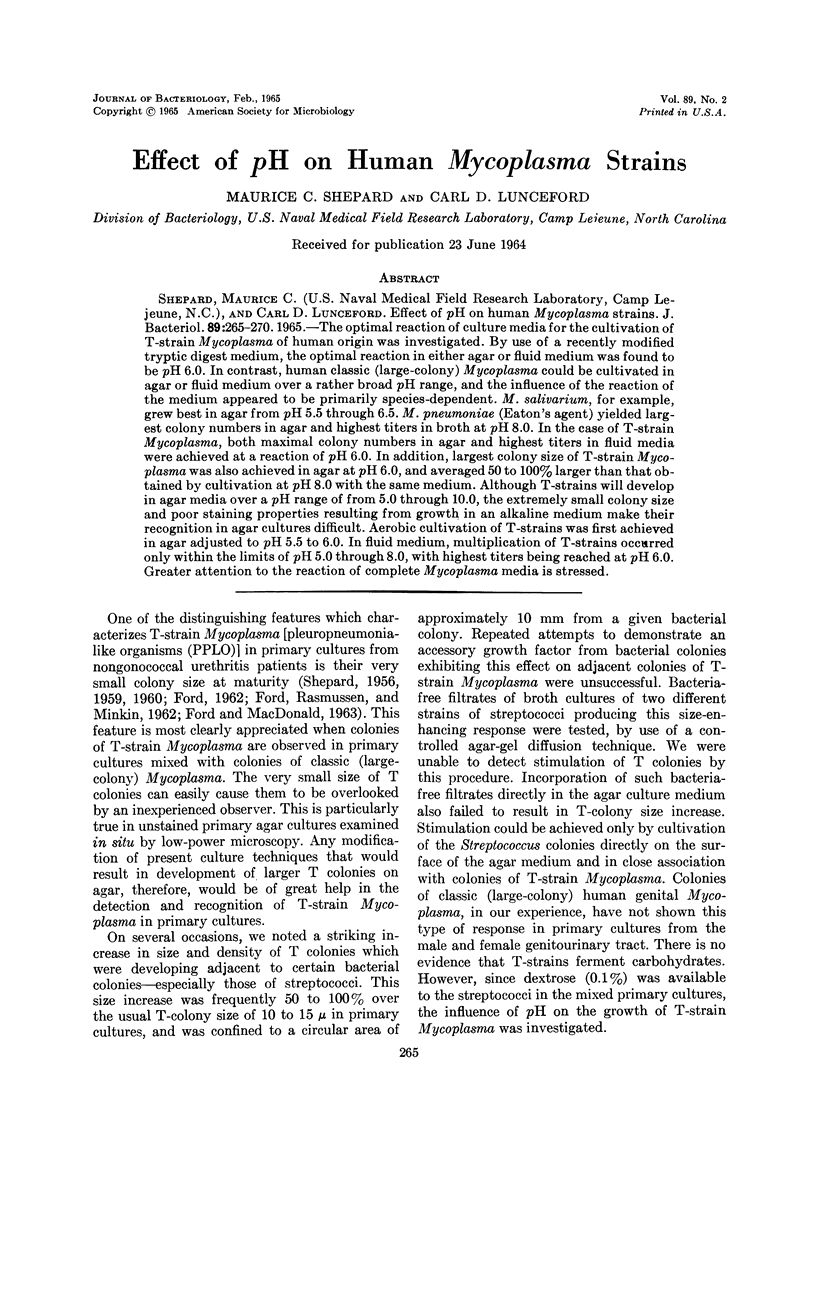
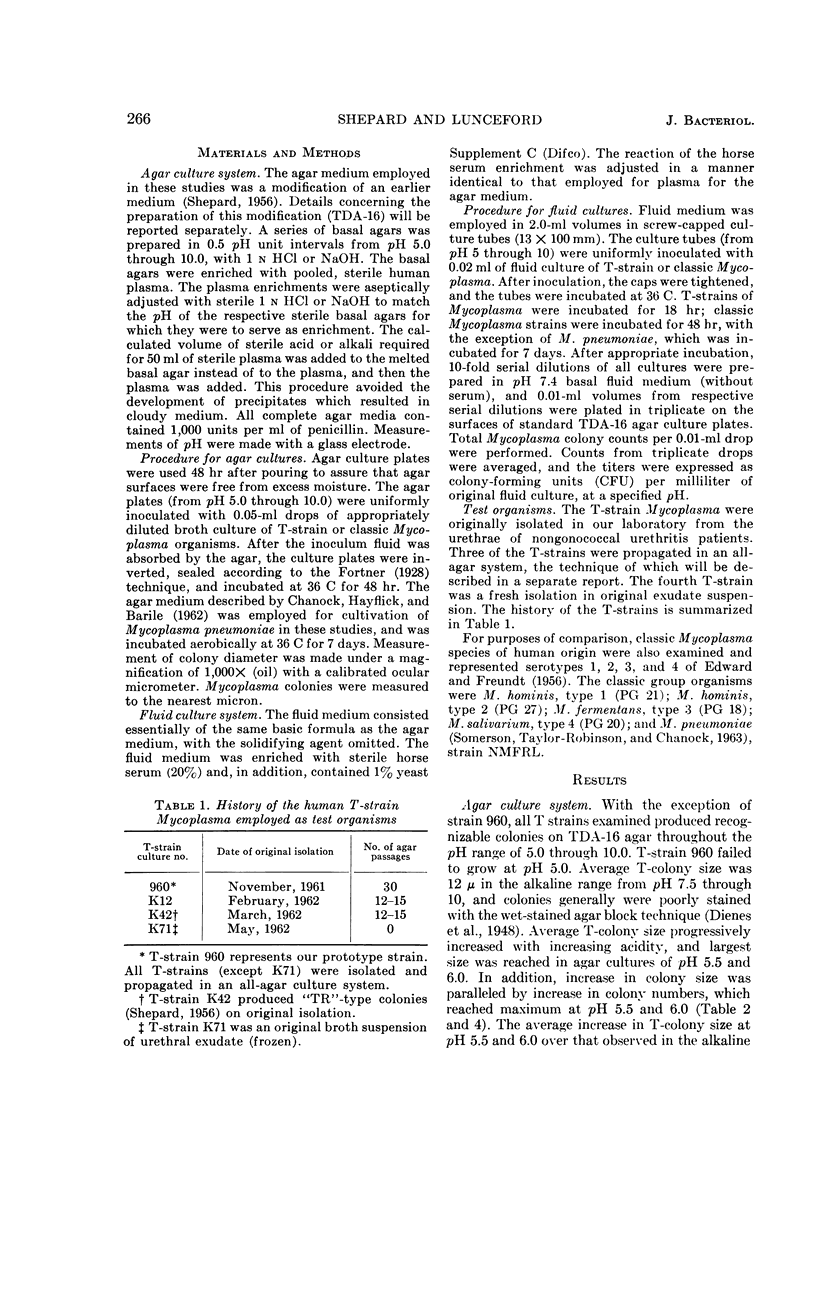
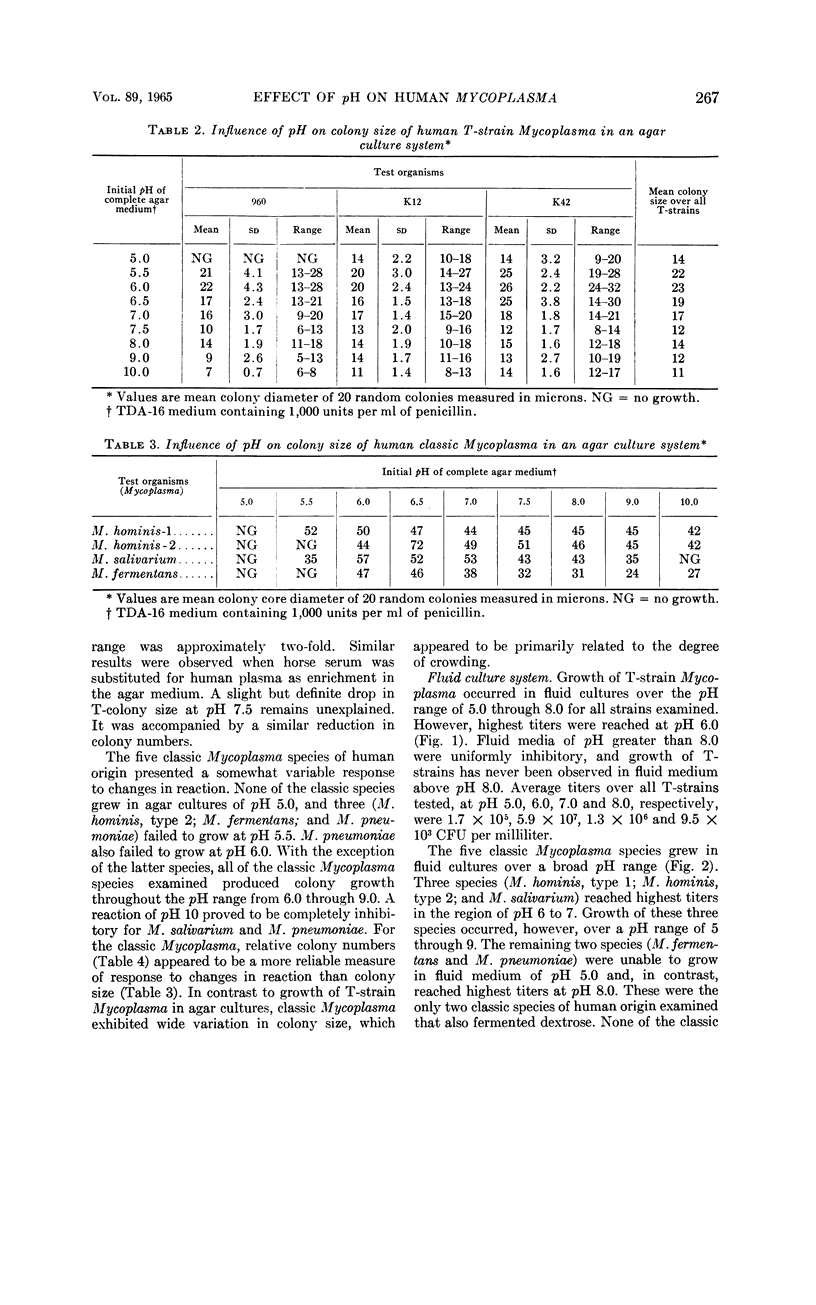
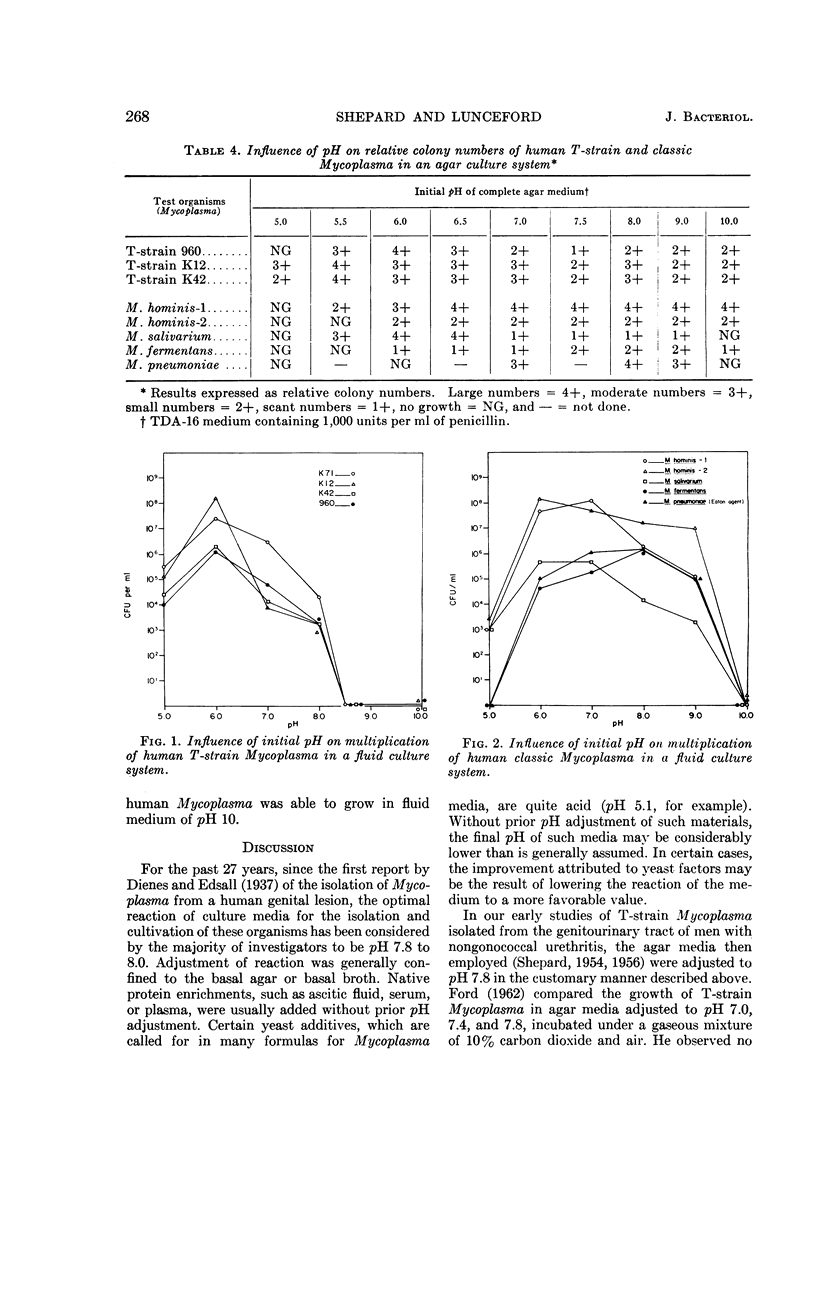
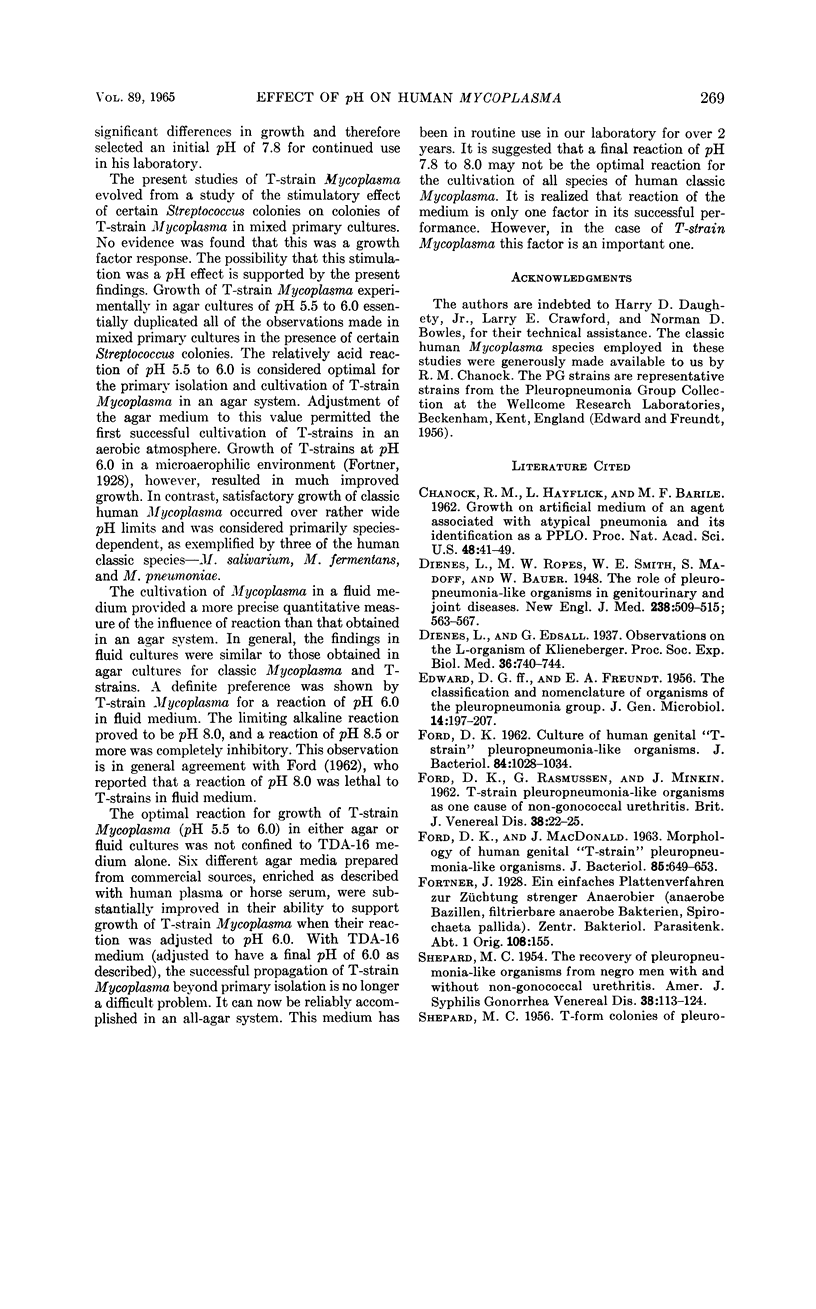
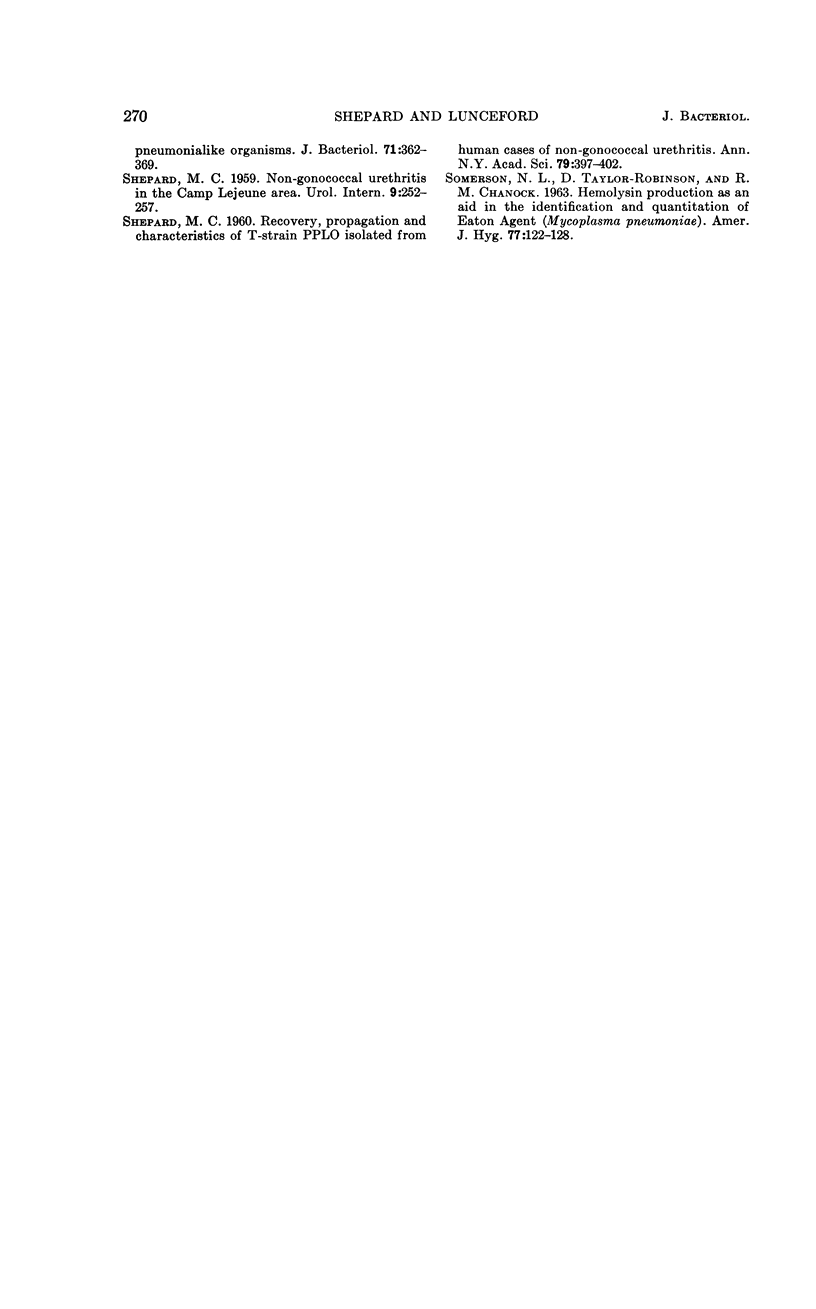
Selected References
These references are in PubMed. This may not be the complete list of references from this article.
- CHANOCK R. M., HAYFLICK L., BARILE M. F. Growth on artificial medium of an agent associated with atypical pneumonia and its identification as a PPLO. Proc Natl Acad Sci U S A. 1962 Jan 15;48:41–49. doi: 10.1073/pnas.48.1.41. [DOI] [PMC free article] [PubMed] [Google Scholar]
- EDWARD D. G., FREUNDT E. A. The classification and nomenclature of organisms of the pleuropneumonia group. J Gen Microbiol. 1956 Feb;14(1):197–207. doi: 10.1099/00221287-14-1-197. [DOI] [PubMed] [Google Scholar]
- FORD D. K., MACDONALD J. MORPHOLOGY OF HUMAN GENITAL "T-STRAIN" PLEUROPNEUMONIA-LIKE ORGANISMS. J Bacteriol. 1963 Mar;85:649–653. doi: 10.1128/jb.85.3.649-653.1963. [DOI] [PMC free article] [PubMed] [Google Scholar]
- FORD D. K., RASMUSSEN G., MINKEN J. T-strain pleuropneumonia-like organisms as one cause of non-gonococcal urethritis. Br J Vener Dis. 1962 Mar;38:22–25. doi: 10.1136/sti.38.1.22. [DOI] [PMC free article] [PubMed] [Google Scholar]
- Ford D. K. CULTURE OF HUMAN GENITAL "T-STRAIN" PLEUROPNEUMONIA-LIKE ORGANISMS. J Bacteriol. 1962 Nov;84(5):1028–1034. doi: 10.1128/jb.84.5.1028-1034.1962. [DOI] [PMC free article] [PubMed] [Google Scholar]
- SHEPARD M. C. Non-gonococcal urethritis in the Camp Lejeune area. Urol Int. 1959;9:252–257. doi: 10.1159/000277460. [DOI] [PubMed] [Google Scholar]
- SHEPARD M. C. Recovery, propagation, and characteristics of T-strain PPLO isolated from human cases of nongonococcal urethritis. Ann N Y Acad Sci. 1960 Jan 15;79:397–402. doi: 10.1111/j.1749-6632.1960.tb42704.x. [DOI] [PubMed] [Google Scholar]
- SHEPARD M. C. T-Form colonies of pleuropneumonialike organisms. J Bacteriol. 1956 Mar;71(3):362–369. doi: 10.1128/jb.71.3.362-369.1956. [DOI] [PMC free article] [PubMed] [Google Scholar]
- SHEPARD M. C. The recovery of pleuropneumonia-like organisms from Negro men with and without nongonococcal urethritis. Am J Syph Gonorrhea Vener Dis. 1954 Mar;38(2):113–124. [PubMed] [Google Scholar]
- SOMERSON N. L., TAYLOR-ROBINSON D., CHANOCK R. M. Hemolyin production as an aid in the identification and quantitation of Eaton agent (Mycoplasma pneumoniae). Am J Hyg. 1963 Jan;77:122–128. doi: 10.1093/oxfordjournals.aje.a120290. [DOI] [PubMed] [Google Scholar]


